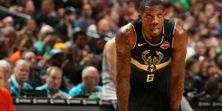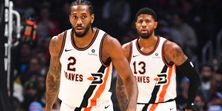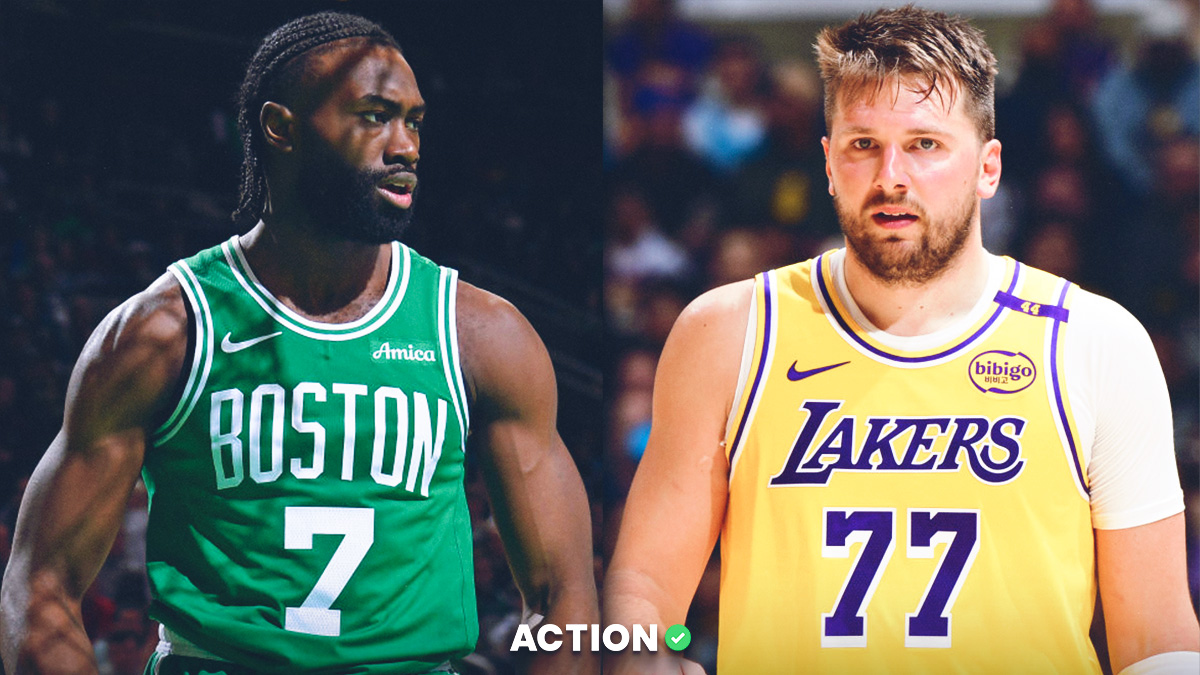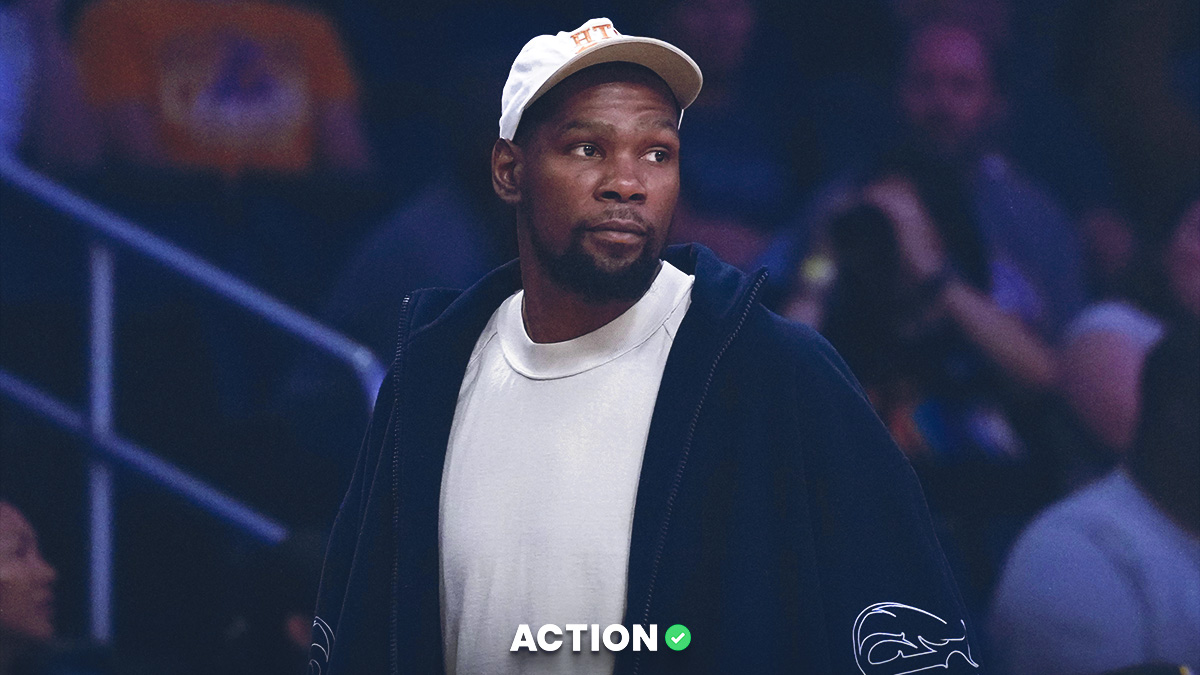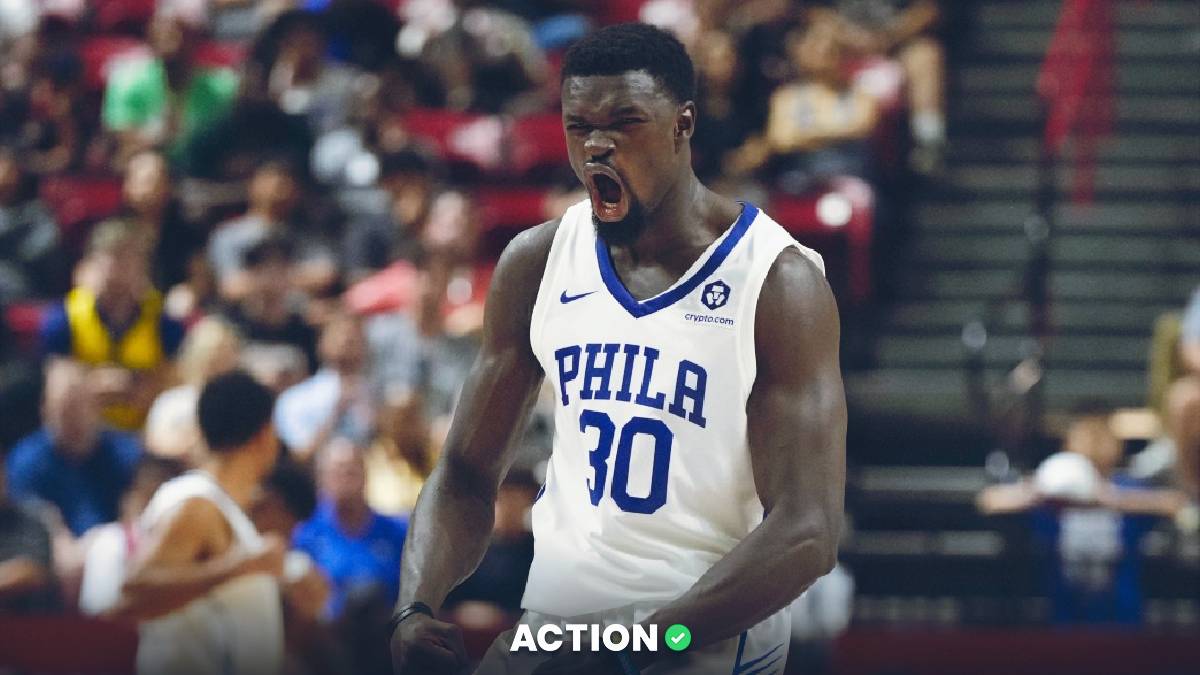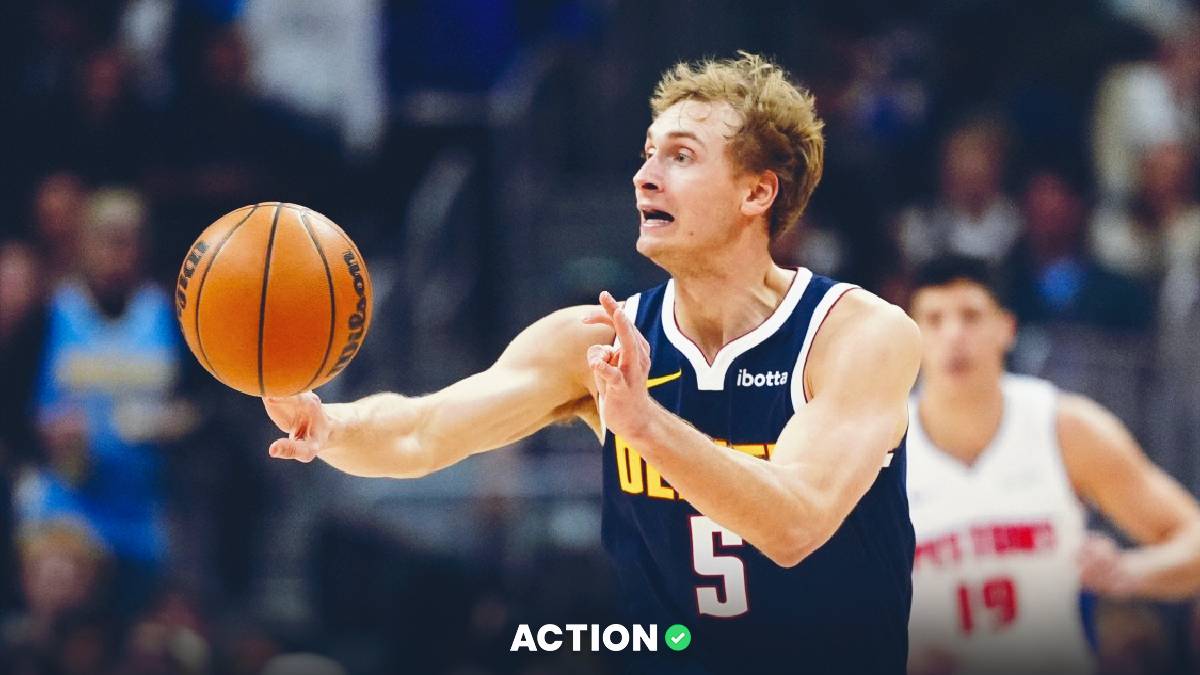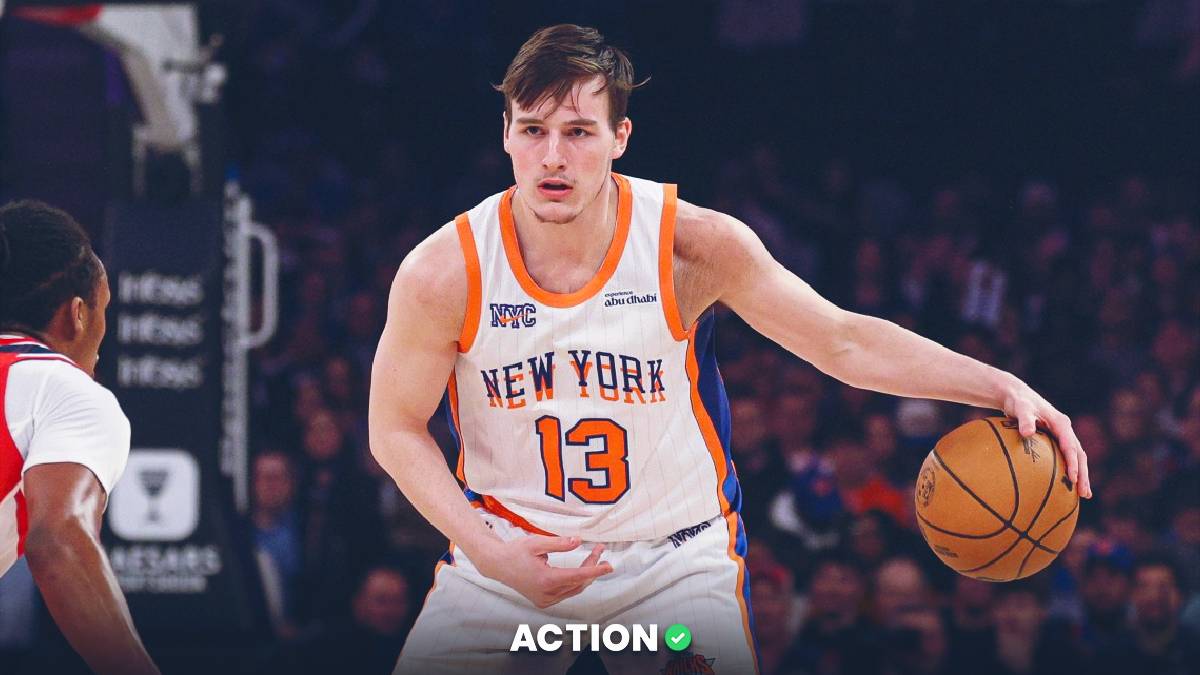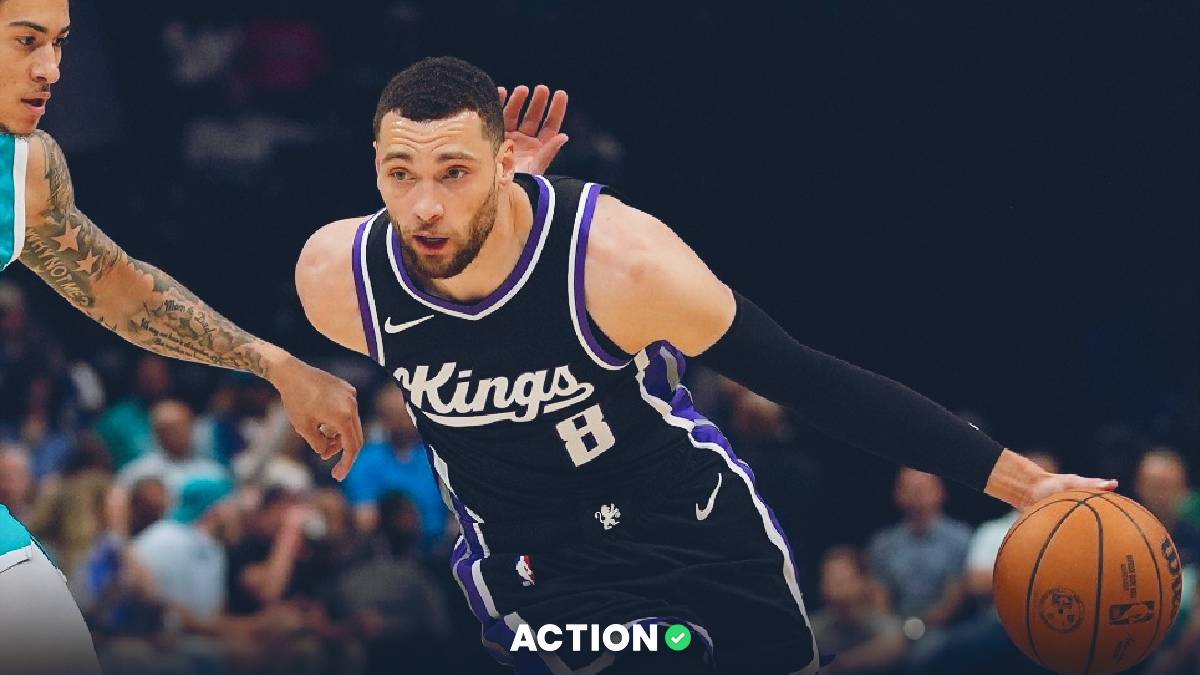Philadelphia 76ers Win Total Odds
| Sportsbook | Over | Under |
|---|---|---|
| DraftKings | 5.5 (+130) [BET NOW] | 5.5 (-177) [BET NOW] |
| PointsBet | 5.5 (+135) [BET NOW] | 5.5 (-170) [BET NOW] |
| FanDuel | 5.5 (+140) [BET NOW] | 5.5 (-165) [BET NOW] |
Do you see a vase/candlestick, or do you see two faces looking at one another?

The point here is that perspective and contrast provide their own images we interpret.
Let me cut to the chase: Brett Brown has always seen a vase with Ben Simmons when he probably should have seen two faces.
The Sixers have struggled to figure out things that work at an elite level with their roster. They have a traditional big man in Joel Embiid, a dominant physical inside force who plays in an era where range means everything. Embiid is the most efficient post-up player in the NBA with at least 100 post-up possessions.
He also takes the seventh-most mid-range shots per game. Not among centers. Among all NBA players. That's a wild failure in optimizing what Embiid does well. The only player in the top-10 of mid-range jumpers per game who shoots worse than Embiid (39.1%) is Russell Westbrook (37.0%). This is not a favorable comparison.
Embiid may be his own Rubik's cube to solve based on his waxing and waning levels of intensity, but there is another puzzle that has to be solved concurrently: Ben Simmons.
A MONSTER YET
Ben Simmons is a monster. He's 6-10, lightning-fast and one of the best overall defenders in the NBA already. Opponents shoot 44% at the rim against him and 37% on jumpers. The Sixers allow just 103.5 points per 100 possessions with Simmons and Embiid on the floor, which would be second-best in the league overall.
Having watched a lot of Simmons for this article, I realized something. The conversation about Simmons is entirely about his jumper and his limitations without really appraising how impactful he is and how good he'll be over time, especially in the playoffs.
Let's talk, for a moment, about how big Simmons is. He's 6-10. But there are 6-10 guys who seem smaller than 6-8 guys when they play, and 6-8 guys who seem bigger than 6-10 guys (like LeBron).
Here's Simmons in the post vs. Paul George. He gets George off a great read from Al Horford, and just look at how much size PG, a pretty big friggin' wing, is giving up here.
Simmons shot 53% in the post. Not great. But you notice a consistent pattern of him being able to body smaller defenders. Here he is against Jimmy Butler, who again, pretty big wing, looks tiny:
I watched several clips from a game where Bulls coach Jim Boylen put Kris Dunn, an absolutely fantastic defender, on Simmons. I am not going to show you the clips because it is such graphic violence to not be safe for work.
Now, Simmons' size was thought to be an asset based on the fact that teams had to line up their point guards against him. He was always at a size advantage. But when you go and watch all his pick-and-roll possessions as the primary point guard, there aren't as many instances where you really see his size being a difference-maker.
This is in part because Simmons is a naturally adept passer. He's not having to jump to make passes over defenders; he instead anticipates the help and is able to deliver the ball perfectly without needing to use his size and height.
He's a good point guard, all on his own. This is why, despite his lack of a jumper, the Sixers scored 47% of the time when Simmons ran a pick-and-roll. The Sixers' 1.091 points per possession (via Synergy Sports) when Simmons ran pick-and-roll ranks fifth-best league-wide among players who had at least 300 attempts.
But here's an interesting chart. The second column is the team's Offensive Rating with the player on the floor. The third column is their rank among players with at least 300 pick-and-rolls including passes.
| Player | Offensive Rating | PPP in PnRs |
|---|---|---|
| Derrick White | 109.1 | 1.130 |
| Kemba Walker | 116.0 | 1.110 |
| Damian Lillard | 114.4 | 1.103 |
| Luka Doncic | 117.0 | 1.101 |
| Ben Simmons | 109.1 | 1.091 |
| Chris Paul | 114.4 | 1.086 |
| Delon Wright | 110.8 | 1.082 |
| Paul George | 114.0 | 1.080 |
| Khris Middleton | 113.4 | 1.073 |
| LeBron James | 113.3 | 1.073 |
Notice that Simmons is right there at the top for efficiency in pick-and-roll, the primary mechanism for point guards. But the Sixers offense — good with Simmons on the floor but better than when he's on the bench (by three points per 100 possessions) — is tied for last among those 10 players.
The Sixers offense with Simmons, with all those weapons, is as good as the Spurs offense with Derrick White on the floor. That's a bad sign.
It should be noted the Sixers run pick-and-rolls the 28th-most in the league. Only the Bucks and Rockets create fewer scoring opportunities out of pick-and-roll.
Some of that is the essential issue with their offense: Having a non-shooter always running your pick-and-roll will result in fewer opportunities.
Some of it is the amount that Embiid posts up. The Sixers focus on creating spot-up opportunities and cuts. They create great offense off-ball.
But ultimately, the offense is limited in its design.
Which is why what Brett Brown said this week matters.
AN EVOLUTION
Brown told reporters that Simmons has been playing at power forward and he's excited about this new look with Shake Milton at point guard.
Now, Milton's a mixed bag. The Sixers scored just 103 points per 100 possessions with Milton and Simmons together, which is not good at all. The Sixers offense overall was great with Milton on the floor, averaging 112, and 119 (which is blistering) when Milton was on-court and Simmons off.
The question is whether those two can't be on court together because of their games, or because of their roles. The Sixers are clearly thinking it's the latter and reconfiguring things.
But so much of this returns us to that original question of the vase vs. the faces. It takes looking at Simmons from a different perspective.
Every writer seems to have their own pet issue with Simmons. Some focus on which hand he shoots with; some focus on the idea of his unwillingness to shoot, regardless of his ability to do so. My own personal issue has always been that Simmons needs to act as a screener more.
When he was a prospect, I wrote that his NBA ideal might be as a super version of Draymond Green. That comparison seems insulting to an All-Star… except, Green is an All-Star. It seems to relegate him to a limited role… except Simmons is already in a limited role based on his shooting struggles.
As for why he has been a point guard in the NBA? From ESPN:
Brown has said that his decision on the starting lineup is an evolving process — something he reiterated Monday. But he also spoke about Simmons playing off the ball, saying that the decision to play him at point guard was made because there was no one better to play it, and that Simmons has handled the situation exactly how Brown had hoped.
"You take somebody and say, 'Here's the ball.' It's not like Ben came in and we had Chris Paul on the team or Damian Lillard on the team," Brown said. "We were young, and really not that good, so it was my decision, 'You take the ball. We're going to make you the point guard.' It's not like there was an established point guard that he had to bump out.
"[And] how has he responded to that? Like a star. Just a mature, 'Whatever it's going to take to get this team to be the best it can be with the pieces that we have that can be, I don't know, just designed into a smooth thing' … that is one of the pieces he has to offer.
"He's been great accepting that, and really killing it in the environment that I just said."
"You're just using him in a bunch of ways and seeing all the different ways he can score," Brown told reporters Thursday. He noted that Simmons' mentality and spirit were tremendous. Simmons has been shooting 3s consistently in practice. I'm not going to go out on a limb and talk about Simmons becoming a shooter. I don't even know if he needs to if deployed correctly.
Simmons as a screener and off-ball weapon is dangerous with his hands and athleticism.
Teams just aren't sure how to handle it:
The biggest reason this adjustment could matter is the playoffs. In the playoffs, teams are much more likely to switch if the Sixers aren't using Embiid. The best way to break a switch apart is to slip the screen and roll directly to the basket. Like this:
And if you focus too much on the slip, it can open up the shooter — something the Sixers need to do more:
Milton threw only eight assists to Simmons this entire season. But one of them was this: a hand-off into a pick-and-roll that shows what they can do.
"(Using him as a screener) is something we've always tried to play with, and it's got to the stage where we have some viable alternatives; now is the time to do that," Brown told reporters Thursday.
"It's pointing in that direction," Brown said in regards to Simmons being used in pick-and-rolls as the screener as part of the core offense.
Equally notable is that Brown discussed improved chemistry between Embiid and Simmons as "big-to-big" passing rather than traditional point guard-to-center dynamics.
This vibes with his previous discussion that Simmons' role previously was built out of necessity, not optimization.
They're starting to look to optimize Simmons, and that is endlessly exciting.
There are surely questions about clogging the paint with both Simmons and Embiid, but this is precisely why Simmons can work in this capacity. He can spread the floor out and drive off the catch, beat his man on the perimeter, force help and deliver a pass for an open 3 or dish to Embiid for the dunk. He can post up and punish smaller matchups if teams switch off-ball on him.
And if the concern is how he'll do vs. bigger opponents…
There is so much to unlock with Simmons if he moves to an off-ball role as a screener weapon. It's not taking the ball out of his hands. It's getting the ball to him at the point of attack rather than having it in his hands just to have it in his hands. And it drastically improves the ceiling for the Sixers offensively.
THE SCHEDULE
The Sixers went 5-9 vs. their upcoming Orlando opponents. Here is where we have to address the invisible and unknowable elephant in the room.
The Sixers went 29-2 at home and 10-24 on the road. That is the best home record in the entire NBA this season… and the seventh-worst road record in the entire NBA this season.
But of course, there is no home anymore, and there is no road anymore.
Does this mean because the Sixers aren't at home at Wells Fargo Center they'll struggle? Or that because they're not playing in road environments they'll thrive? Somewhere in the middle?
In that 5-9 record, only one of those wins came on the road and none of the losses at home. So let's start over and just look at the matchups and how they should perform, especially with this evolution of their starters.
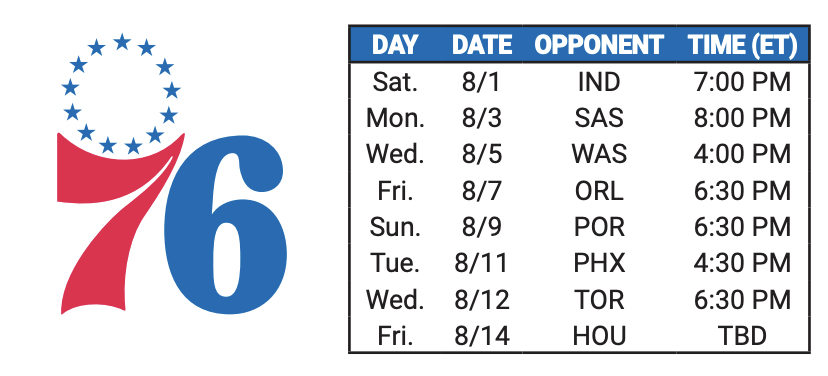
The Pacers took two off the Sixers, but with a full roster Philly has the components to win. Particularly if Embiid wins his matchups vs. Domantas Sabonis and Myles Turner, they should cave the Pacers defense in.
The Spurs will be tricky; without LaMarcus Aldridge they'll shoot more 3s. But Philly still has more firepower.
Washington's defense is soft enough for the Sixers to carve. Orlando will be a rock fight but doesn't have the weaponry.
The Blazers will look different with Jusuf Nurkic and Zach Collins, but the Sixers' lone road win vs. this group was vs. Portland. Phoenix is tricky but, again, outgunned.
The Raptors are the one team you need to assign as a loss here. The Sixers can absolutely win; they nearly beat them last year with Kawhi Leonard in the playoff series. But the Raptors have been better all season and have Marc Gasol to combat Embiid.
Houston is a toss-up.
So … six should-wins, one coin toss and one should-lose.
Motivation is of some doubt.
If you're the Sixers, do you want to advance to the 4/5 matchup? There's a decent chance if they stay in the 6-seed that they'll face the Celtics, against whom they match up very well. Plus, they get to avoid the Bucks until the conference finals.
If the Sixers go 6-2, the Heat need to go just 3-5 to clinch a higher finish. That leaves it up to the Pacers, who are only a half-game ahead. They'd have to also finish 6-2.
But again, there's no telling if the Sixers want to face the Heat, against whom they went 1-3 in the regular season, or the Celtics, against whom they went 1-2. That, of course, depends on if Toronto can hold off Boston for the 2-seed.
THE VALUE
The swing for me here comes on the juice. The Sixers are +140 to go over 5.5. They can go 6-2 and still not move out of this slot, plus it's not insane to imagine the Celtics, with an ailing Kemba Walker, sliding in the seeding games to allow Miami to go on a run. (Although Boston has a three-game lead and tiebreaker; if the Celtics go a "meh" 4-4, the Heat will have to go 7-1, which isn't realistic).
Ultimately, teams don't target the matchups they want often enough; they play the games and try to beat whoever is in front of them. With Simmons shifting to power forward at least part-time, this opens up doors that were closed for the Sixers offensively.
The defense is ferocious and doesn't rely on a scheme to get by. They just get after guys. That will play to their advantage, and I like the Sixers to go over 5.5 wins in the seeding games.
You can look at Philly and see a mess of chemistry with a questionable coach and an inconsistent superstar. I'm seeing the two faces and a team that can make a ruckus inside the bubble.



